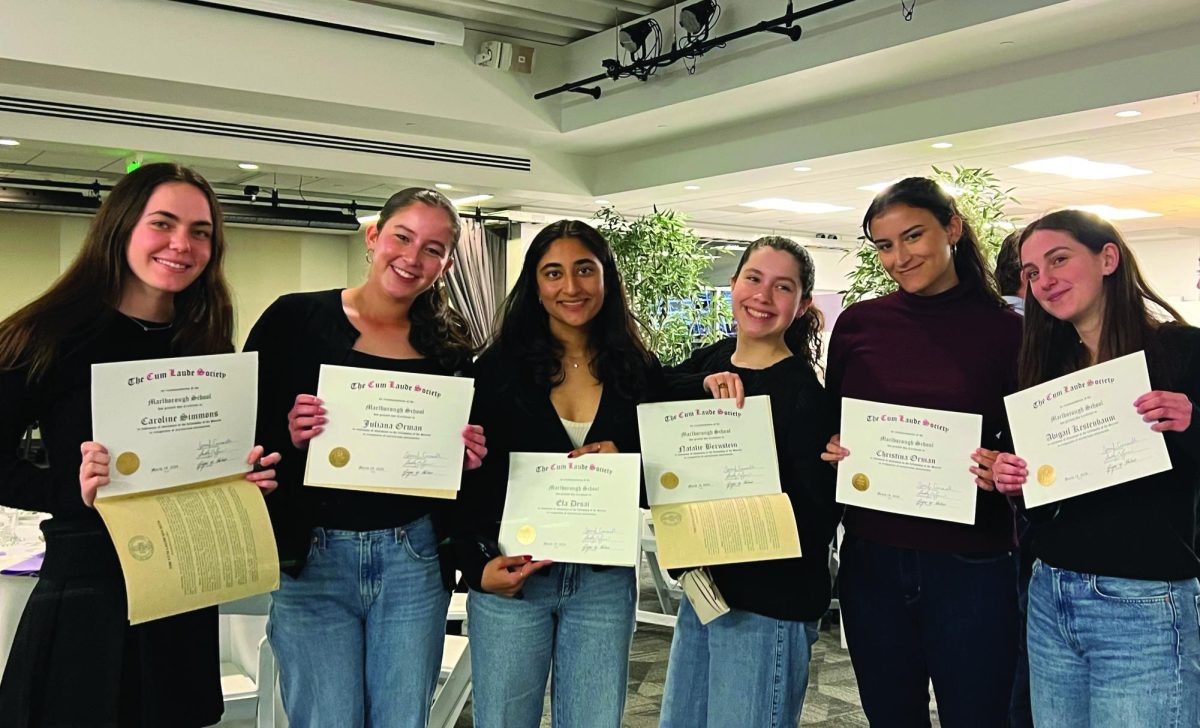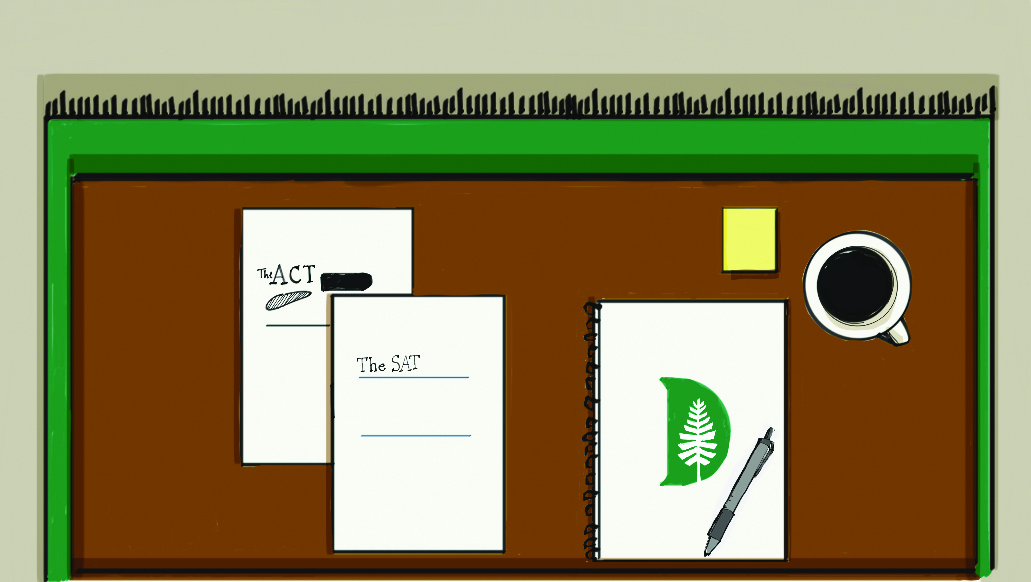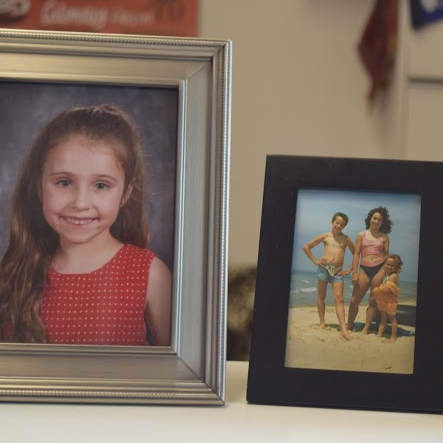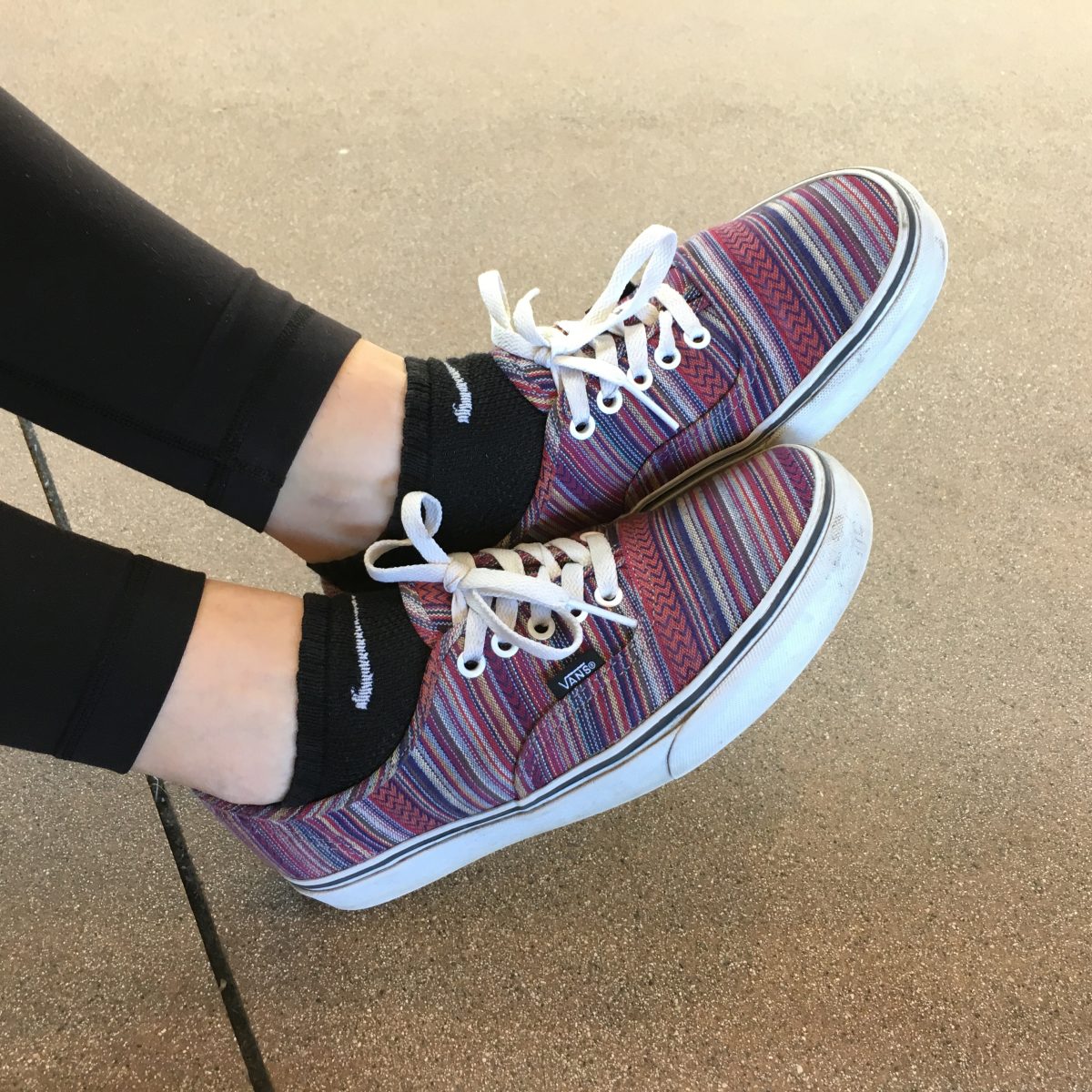
Transportation Security Administration (TSA) full-body scans, otherwise known as advanced imaging technology, caused controversy for Marlborough students and faculty traveling by airplane this winter break as people across America asked themselves how far they are willing to go for national security.
As Ariel “Ari” ’11 made her way through airport security, the scanner used millimeter wave and backscatter technology to produce a photo negative of her body.
“They told me to spread my legs and to put my arms up, and I was thinking, ‘I’m 17. I’m a minor. This is somewhat uncomfortable,’” she said.
Ari’s father has metal in his body from knee surgery and therefore only had the option of a pat down.
“It was really awkward to watch my dad get a very thorough pat down,” Ari said. “I definitely wouldn’t want to get one.”
By requiring all passengers either to be scanned or to receive a full-body pat down, TSA said they hope to prevent any future terrorist attacks involving concealed weapons or explosives on airplanes.
For many, the idea of undergoing a thorough full-body pat down or going through a full-body scan is disturbing. Others said they don’t mind the new security precautions and understand their importance.
“For me the pat down was not that awkward, but I could see how people would think it’s intrusive,” Alix ’11 said.
History & Social Sciences Department Head Catherine Atwell, whose Honors History Seminar class focuses on terrorism, said she doesn’t personally object to the scans but thinks they are an inadequate match for the true threats faced by airlines.
“It’s important to use our resources effectively, and it doesn’t make sense to waste money on the wrong threat. The new airport security system only stops copy-cats from committing the same attack someone else tried before them,” she said.
According to Atwell, the main goal of the new regulations is to provide a sense of safety for travelers.
“The intense security reassures people psychologically that everything is going to be OK,” she said. However, not everyone agrees that the scanners provide a greater sense of safety.
School Counselor Emily Vaughn said she believes children and parents might feel that the scans go too far in trying to keep flying safe. Many argue that the scans produce a detailed picture of what your body looks like in terms of size and shape.
“I think that some children, especially teens, can be very self-conscious. If they hear that the scans ‘show you naked’ and don’t know more than that, they might feel that their privacy is at risk,” Vaughn said.
Because passengers have a choice between getting a pat down and going through the scanners, there is some debate about which option is worse. Rita ’13 said that, though she doesn’t approve of either method, she prefers to go through the scanners out of convenience; they’re ten seconds while a pat down takes four minutes.
“I think the scans are more intrusive than the pat downs because in a scan, they can see everything. The scans completely put you on display,” Rita said.
Other students said they refuse to endure a pat down.
“I don’t mind the scanner because your identity is concealed. The pat down is what bothers me most,” Sarah’11 said. “When the airport in South Carolina was requiring passengers to get a pat down because they didn’t have any scanners, my grandmother drove four hours to Georgia to avoid getting a pat down.”
Despite complaints from the American public, the new security procedure is quickly expanding to other airports across the country. TSA reported that as of Nov. 20, there were 486 full-body scanners in 78 United States airports, and by the end of 2011, the agency plans to increase that number to 1,000. Senators Bob Bennett (R-UT) and Amy Klobuchar (D-MN) plan to pass the Securing Aircraft From Explosives Responsibly: Advanced Imaging Recognition (SAFER AIR) Act by 2013, making full-body scans mandatory for air travel in the U.S.
Though opinions and complaints won’t ultimately have the power to change anything, many people are left frustrated and confused by these thorough searches.
“I don’t see why they have to pat you down so closely,” Hannah ’12 said. “It doesn’t seem like they are accomplishing anything more than they usually do.”













Nikki Gomez • Feb 1, 2011 at 5:25 pm
When I recently traveled through the International Terminal at LAX there was a choice. Passengers could queue up for the older no image xray machines or passengers could opt for the one full body machines mentioned above. It seems that if you are paying attention to the lines, there is still a bit of choice involved at the larger airports.
Maya Klapper • Jan 28, 2011 at 12:12 pm
I definitely would have a body scan instead of a pat down, not that I would like to choose either. I understand it’s for security reasons (the scanners and pat downs) but it’s really invading everyone’s personal space
Christine Ocheltree • Jan 28, 2011 at 12:10 pm
I definitely agree with Ms. Vaughn that the body scans might be uncomfortable but I would definitely like a body scan better than a pat down.
Mr. Krewatch • Jan 18, 2011 at 8:07 pm
Hey Folks!
Just wanted to say that I received my January edition, and it looks great. I’m blown away by the steady progress on the part of the staff writers — Ms. Lewis must be feeling pretty good about the UV’s future and the leadership her editors are providing in the present. I haven’t read everything yet, but across the board, it’s terrific stuff — well sourced and well presented. And this site is outstanding — we made a huge improvement last year, and this is leaps and bounds beyond that. I hope you’re all feeling good about yourselves.
Elyse, thank you for your e-mail — I owe you a response, and you’ll get it. Ms. Lewis, I think I owe you one too. Life on the Third Coast has been amazing but … challenging. Time has been scarce.
My best wishes to all — Mr. K